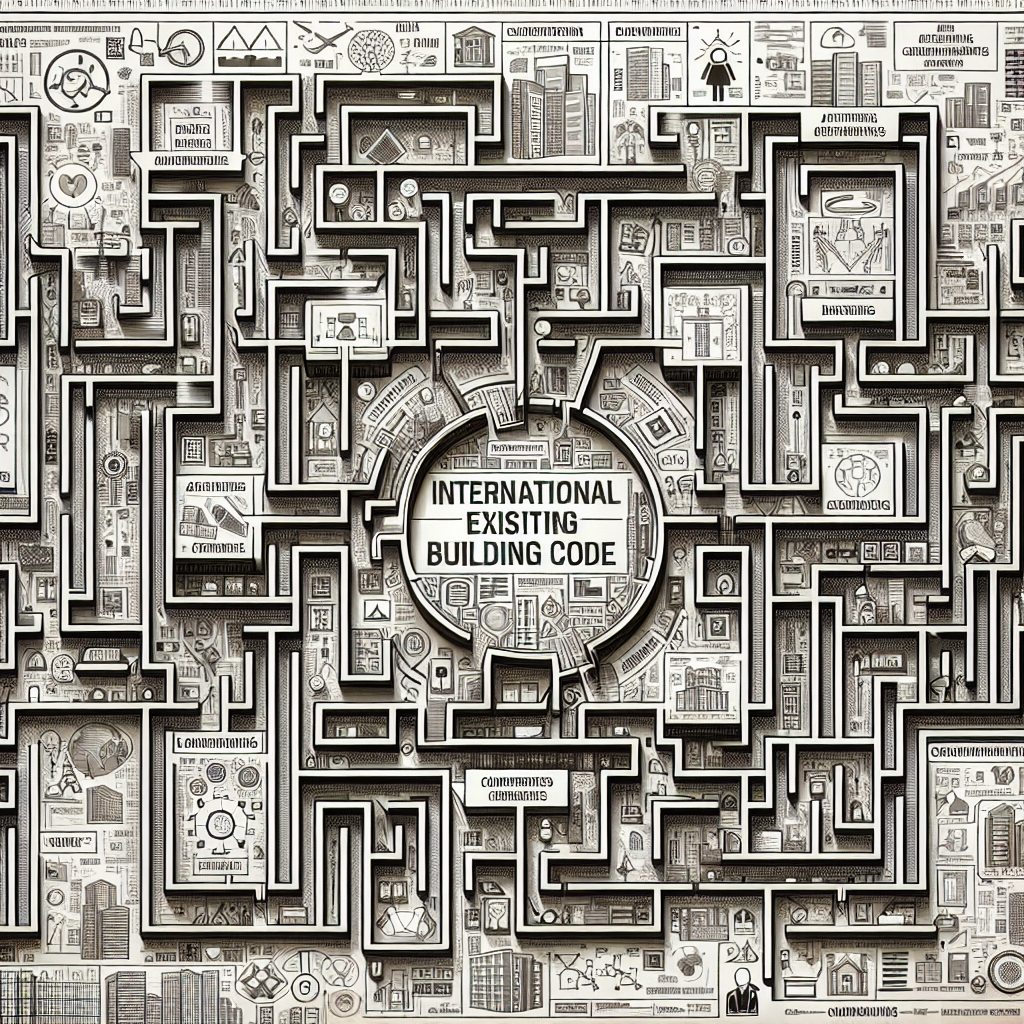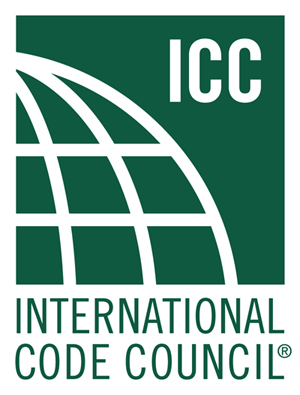Your cart is currently empty!
“Comprehensive Guide to the International Existing Building Code”

Navigating the complexities of building codes can be a daunting task for architects, engineers, and construction professionals. The International Existing Building Code (IEBC) is a comprehensive guideline that addresses the unique challenges associated with existing buildings. This article aims to provide an authentic guide to the IEBC, offering insights into its key components, compliance requirements, and the benefits of its adoption in building projects. For more in-depth information, you can visit IBC Manual.
Introduction to the International Existing Building Code
The International Existing Building Code (IEBC) is a critical component of the International Code Council’s (ICC) suite of model codes. First introduced in 2003, the IEBC was developed to address the rehabilitation and renovation of existing buildings, which often present unique challenges that new constructions do not. The code is designed to ensure that existing buildings meet modern safety, accessibility, and energy efficiency standards without necessitating complete reconstruction.
One of the primary objectives of the IEBC is to provide a clear and consistent framework for the repair, alteration, addition, and change of occupancy of existing buildings. It aims to balance the need for safety and sustainability with the practical considerations of working within the constraints of existing structures. By offering flexible yet rigorous guidelines, the IEBC supports the preservation and adaptive reuse of buildings, thereby contributing to sustainable development goals.
The IEBC is part of the ICC’s family of codes, which includes the International Building Code (IBC), International Residential Code (IRC), and International Fire Code (IFC), among others. These codes are widely adopted across the United States and internationally, providing a standardized approach to building safety and performance. The IEBC specifically focuses on the unique aspects of existing buildings, complementing the broader scope of the other codes.
In addition to its primary focus on safety and performance, the IEBC also addresses issues related to historic preservation. It includes provisions that allow for the retention of historical features while ensuring that the building meets current safety standards. This balance is crucial for maintaining the cultural and architectural heritage of communities.
The IEBC is periodically updated to reflect advancements in technology, changes in industry practices, and evolving safety standards. These updates are the result of a collaborative process involving industry experts, code officials, and stakeholders. The goal is to ensure that the code remains relevant and effective in addressing the needs of existing buildings.
For professionals involved in the rehabilitation and renovation of existing buildings, understanding the IEBC is essential. It provides the necessary guidelines to ensure that projects are compliant with current standards while addressing the unique challenges that come with working on existing structures. For more detailed information on the IEBC, you can visit IBC Manual.
Key Components of the IEBC: A Detailed Overview
The IEBC is organized into several key components that collectively address the various aspects of working with existing buildings. These components include the scope and administration, compliance methods, and specific requirements for repairs, alterations, additions, and changes in occupancy.
The first component, Scope and Administration, outlines the purpose of the code and its applicability. It defines the types of buildings and work that fall under the IEBC’s jurisdiction, providing a clear framework for when and how the code should be applied. This section also includes administrative provisions, such as the duties and powers of code officials and the process for obtaining permits and inspections.
The Compliance Methods section is one of the most critical components of the IEBC. It offers three distinct methods for demonstrating compliance: the Prescriptive Method, the Work Area Method, and the Performance Method. Each method provides a different approach to achieving compliance, allowing for flexibility based on the specific circumstances of the project. The Prescriptive Method relies on a set of predefined requirements, the Work Area Method focuses on the specific areas of the building being altered, and the Performance Method evaluates the overall performance of the building.
Repairs, alterations, and additions are addressed in dedicated sections of the IEBC. These sections provide detailed requirements for each type of work, ensuring that the safety and performance of the building are maintained or improved. For example, the Repairs section outlines the standards for repairing damaged or deteriorated elements, while the Alterations and Additions sections provide guidelines for modifying or expanding the building.
The IEBC also includes provisions for changes in occupancy, which are critical for ensuring that buildings remain safe and functional when their use changes. This section outlines the requirements for different types of occupancy changes, such as converting a commercial building to residential use. It ensures that the building meets the necessary safety and performance standards for its new use.
Accessibility is another key component of the IEBC. The code includes specific requirements to ensure that existing buildings are accessible to individuals with disabilities. These requirements are aligned with the Americans with Disabilities Act (ADA) and other relevant standards, ensuring that buildings are inclusive and accessible to all.
Finally, the IEBC addresses energy conservation, providing guidelines for improving the energy efficiency of existing buildings. This component is essential for reducing the environmental impact of buildings and supporting sustainability goals. The code includes requirements for insulation, lighting, HVAC systems, and other elements that contribute to the overall energy performance of the building.
Understanding Compliance and Applicability of the IEBC
Compliance with the IEBC is essential for ensuring the safety, functionality, and sustainability of existing buildings. Understanding the applicability of the code and how to achieve compliance is crucial for professionals involved in building rehabilitation and renovation projects.
The IEBC applies to a wide range of existing buildings, including commercial, residential, and historical structures. It is designed to address the unique challenges associated with these buildings, offering a flexible yet rigorous framework for ensuring that they meet modern safety and performance standards. The code is applicable to various types of work, including repairs, alterations, additions, and changes in occupancy.
One of the key aspects of achieving compliance with the IEBC is selecting the appropriate compliance method. The code offers three methods: the Prescriptive Method, the Work Area Method, and the Performance Method. Each method provides a different approach to demonstrating compliance, allowing professionals to choose the one that best fits the specific circumstances of their project. For example, the Prescriptive Method may be suitable for straightforward repairs, while the Performance Method may be more appropriate for complex alterations.
The compliance process involves several steps, including obtaining the necessary permits and inspections. Code officials play a critical role in this process, ensuring that the work meets the requirements of the IEBC. Professionals must work closely with code officials to ensure that their projects are compliant and that any issues are addressed promptly.
In addition to meeting the specific requirements of the IEBC, professionals must also consider other relevant codes and standards. The IEBC is part of the ICC’s family of codes, and projects may need to comply with other codes, such as the International Building Code (IBC) or the International Fire Code (IFC). Coordination between these codes is essential for ensuring that all aspects of the project are addressed.
Historic preservation is another important consideration for compliance with the IEBC. The code includes provisions that allow for the retention of historical features while ensuring that the building meets current safety standards. Professionals must carefully balance the need for preservation with the requirements for safety and performance.
Finally, accessibility and energy conservation are critical components of compliance with the IEBC. The code includes specific requirements to ensure that existing buildings are accessible to individuals with disabilities and that they meet modern energy efficiency standards. These requirements are essential for creating inclusive and sustainable buildings.
Benefits of Adopting the IEBC for Building Projects
Adopting the International Existing Building Code (IEBC) offers numerous benefits for building projects, particularly those involving the rehabilitation and renovation of existing structures. These benefits extend to safety, sustainability, cost savings, and compliance with modern standards.
One of the primary benefits of adopting the IEBC is the enhancement of safety. The code provides comprehensive guidelines for ensuring that existing buildings meet current safety standards, addressing issues such as structural integrity, fire safety, and accessibility. By following the IEBC, professionals can ensure that their projects are safe for occupants and compliant with relevant regulations.
Sustainability is another significant benefit of adopting the IEBC. The code includes provisions for improving the energy efficiency of existing buildings, reducing their environmental impact. By implementing these guidelines, professionals can contribute to sustainability goals and reduce the long-term operating costs of buildings. The IEBC’s focus on the adaptive reuse of buildings also supports sustainable development by preserving existing structures and reducing the need for new construction.
Cost savings are an important consideration for any building project, and the IEBC offers several opportunities for reducing costs. The code’s flexible compliance methods allow professionals to choose the most cost-effective approach for their specific project. Additionally, the IEBC’s provisions for repairs and alterations can help extend the lifespan of existing buildings, reducing the need for costly replacements.
Adopting the IEBC also ensures compliance with modern standards, which is essential for meeting regulatory requirements and avoiding potential legal issues. The code is part of the ICC’s family of codes, which are widely adopted across the United States and internationally. By following the IEBC, professionals can ensure that their projects are compliant with current standards and regulations.
Another benefit of the IEBC is its support for historic preservation. The code includes provisions that allow for the retention of historical features while ensuring that the building meets current safety standards. This balance is crucial for maintaining the cultural and architectural heritage of communities, and it can enhance the value and appeal of buildings.
Finally, adopting the IEBC can improve the overall quality and performance of building projects. The code provides clear and consistent guidelines for working with existing buildings, helping professionals achieve high standards of workmanship and performance. By following the IEBC, professionals can ensure that their projects are of high quality and meet the needs of occupants and stakeholders.
For more detailed information on the benefits of adopting the IEBC, you can visit IBC Manual.
In conclusion, the International Existing Building Code (IEBC) is an essential tool for professionals involved in the rehabilitation and renovation of existing buildings. Its comprehensive guidelines address the unique challenges associated with these projects, ensuring that buildings
